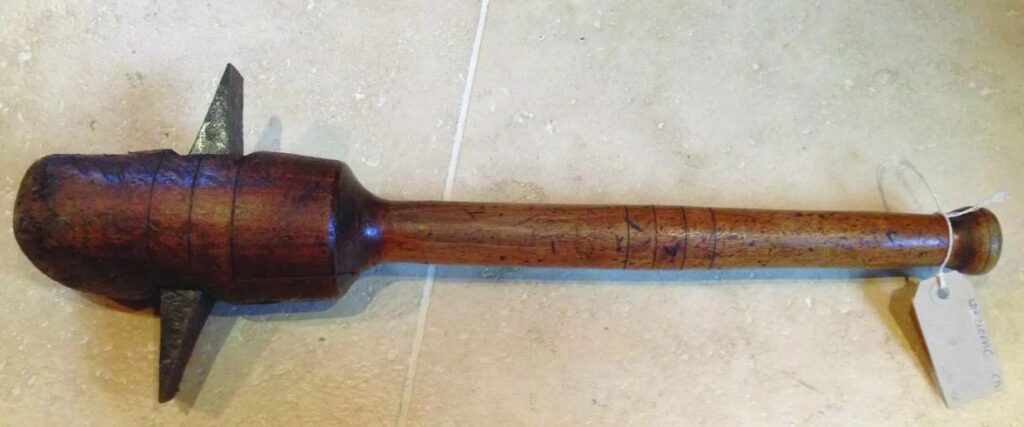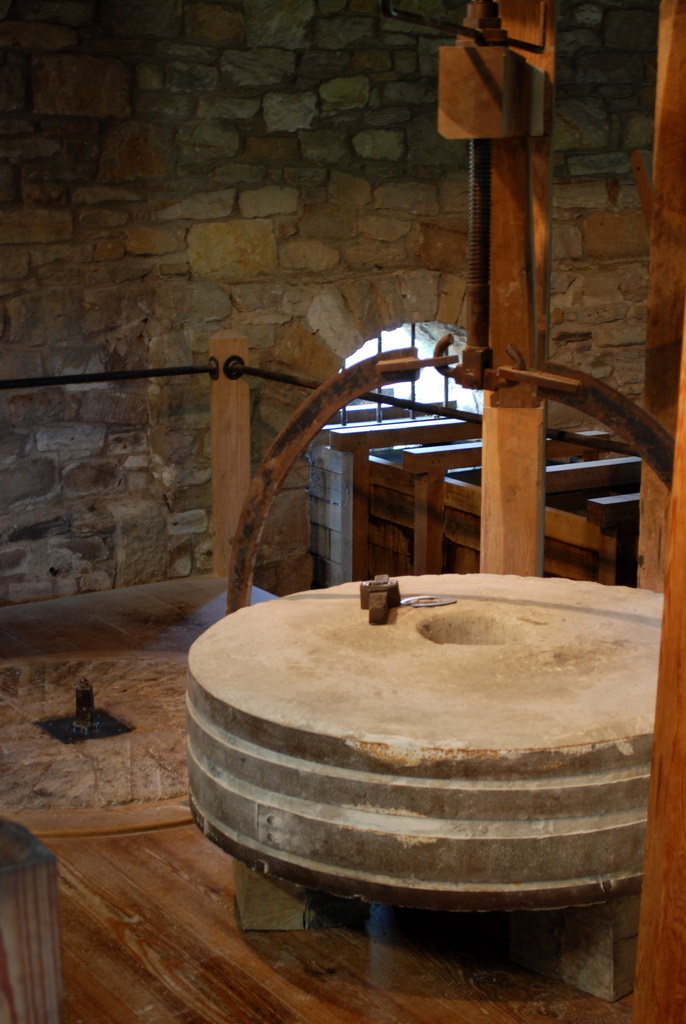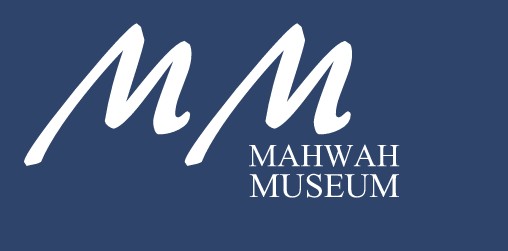Odd Old Tools
By Charles Anderson, The Old Station Timetable, October 1981
The term “Floating Teeth” is still in use today and the tool for doing it is still called a “float”. It is a coarse single cut file used to rasp rough or irregular edges of a horse’s teeth. Unless done when necessary the horse’s mouth.would develop sores, he would go off his feed and food would be inadequately chewed. Among the local farmers in earlier times there were a few who were skillful in floating. After wedging the mouth open (securely) the job could be done quickly. A hundred years ago the term would not have puzzled anybody.

Another tool not seen around today is the mill bill. Every grist mill operator was familiar with the tool and knew the tedious and painstaking work involved in using it. It consisted of two parts. The “thrift” looked somewhat like half of a squared rolling pin with a hole cut through the roller part to accommodate an iron or steel bit held in place with a wedge. The instrument was used to deepen the worn furrows in millstones. A dull stone was said to destroy the quality of the grain resulting in a sticky product in the baking process. Both the nether (lower) and the runner (upper) had furrows chisled in them which initially served to rip away from the center to the outer edge and admitted air to prevent a dangerous build up of heat. The actual grinding was done by the flat surface between the furrows called the “land”. Both terms are typically agriculturally oriented. As the surface and edges became worn the mill bill was used to restore the depth of the furrow and angle by chipping the stone. Mr. Ackerman of Wyckoff Ave. worked in the family grist mill and well remembers working on the stone.

The Ackerman grist mill was located near the outlet of the pond on Wyckoff Ave. It was originally owned by Alyea. Since Wyckoff Ave. used to run on the west side of the pond the door was located on that side. The grain was taken down a ramp and under an endless chain of buckets that lifted it to the hopper in the upper part of the mill. Power was provided by water turning an undershot wheel.
Old grinding stones were made of local materials. Granite was a favorite and was used in the Ackerman mill. Elsewhere a quartz shot sandstone was used or more expensive burr stone which came from Europe in pieces that had to be filled, cemented together and then banded with hoops. Early millstones have been found in which the furrows were cut in spirals but most of the stones were cut with straight furrows. The patterns varied. When the milled flour fell from the furrows it was caught in a finely woven cloth sieve which was rapidly agitated. Wooden shovels were used to move the flour because of the danger of combustion.
